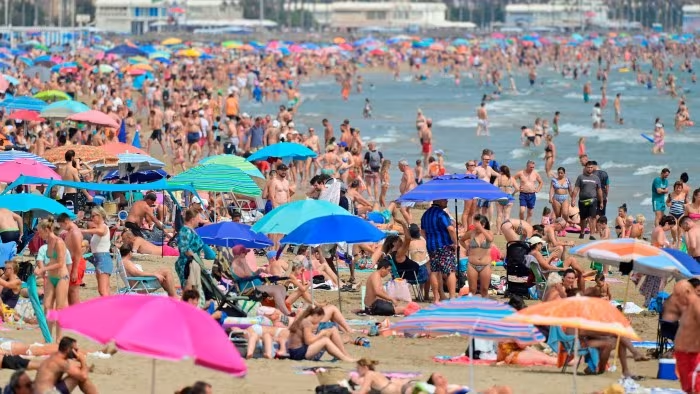Unlock the Editor’s Digest for free
Roula Khalaf, Editor of the FT, selects her favourite stories in this weekly newsletter.
Spain is a rare bright spot among Europe’s otherwise drearily performing economies. Since the start of 2024, the Spanish economy has grown at an average annual rate of 3 per cent, compared with just over 1 per cent for the Eurozone as a whole. In recent weeks, S&P Global Ratings has upgraded its credit rating, and the Bank of Spain raised its 2025 growth forecast to 2.6 per cent — underscoring the nation’s position as Europe’s fastest-growing major economy, and one of the strongest in the advanced world.
A mix of factors have propelled its growth. Tourism has recovered from the pandemic. The government has been spending grants from the EU’s Next Generation EU fund on improving infrastructure; Spain is the second largest beneficiary. Cheap renewable energy has also attracted foreign direct investment. Earlier reforms, including an initiative in 2021 to boost the stability of employment, have helped too.
But Spain’s biggest motor has been immigration. While other European nations have been keen to tighten their borders, Spain has adopted a more liberal approach. Since 2022, it has averaged a net annual inflow of about 600,000 immigrants, and the bulk have been of working age. An expanding labour pool has pushed employment to record highs and helped Spain to avoid some of the severe skills shortages that have plagued its European peers. The population spurt has also boosted consumer spending.
A significant portion of new arrivals have come from Latin America. In 2023, migrants from the region accounted for about 70 per cent of the increase in Spain’s population, according to JPMorgan. A shared language, cultural similarities and existing networks have aided their integration into the labour market, and acceptance into society more broadly. The migrant surge is set to continue. Spain recently simplified legal immigration routes and has plans to grant residency and work permits to more undocumented migrants.
For all its success so far, the immigrant-led growth boom must be managed carefully. First, although Spain’s real GDP, on a purchasing power parity basis, has risen by about 6.8 per cent since 2019, in per capita terms it has grown by just 3.1 per cent. Migrants have mainly filled gaps in lower value-added sectors, including hospitality and construction. To ensure living standards also grow, Spain’s languid productivity growth needs to improve too.
The IMF recommends streamlining regulations and providing tax incentives to raise the availability of long-term risk capital, particularly to boost small businesses. Upskilling initiatives would also support growth and attract further FDI in high-end service sectors, including in finance, IT consulting and engineering. Indeed, Spain’s unemployment rate is still the highest in the EU.
Second, policymakers ought to anticipate broader social-economic issues that may hinder the sustainability of high immigrant flows. Most Spanish people support immigration. But if the government fails to give adequate support for access to affordable housing and public services, the openness to outsiders might dwindle. Rents are unaffordable for many and there have been episodes of unrest between locals and people of North African origin.
Spain’s fragmented political environment will, however, be a big obstacle to building on its economic progress. The scandal-hit minority government of Prime Minister Pedro Sánchez has struggled to pass major legislation. This is a shame. Spain has shown other advanced economies how immigration can be an important source of economic resilience, even in a period of instability at home and abroad. To remain an exemplar, Spain needs to turn its demographic windfall into lasting prosperity.
